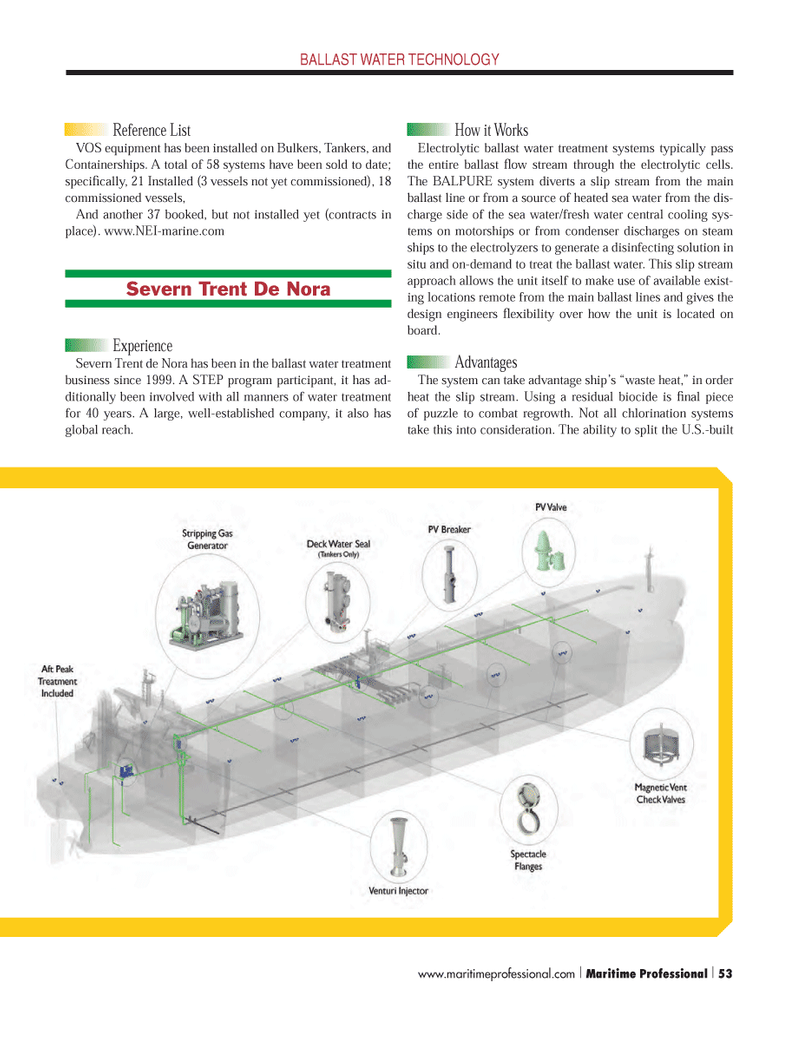
Page 53: of Maritime Logistics Professional Magazine (Q4 2012)
The Environment: Stewardship & Compliance
Read this page in Pdf, Flash or Html5 edition of Q4 2012 Maritime Logistics Professional Magazine
BALLAST WATER TECHNOLOGY Reference List VOS equipment has been installed on Bulkers, Tankers, and Containerships. A total of 58 systems have been sold to date; speciÞ cally, 21 Installed (3 vessels not yet commissioned), 18 commissioned vessels, And another 37 booked, but not installed yet (contracts in place). www.NEI-marine.com ExperienceSevern Trent de Nora has been in the ballast water treatment business since 1999. A STEP program participant, it has ad- ditionally been involved with all manners of water treatment for 40 years. A large, well-established company, it also has global reach. How it Works Electrolytic ballast water treatment systems typically pass the entire ballast ß ow stream through the electrolytic cells. The BALPURE system diverts a slip stream from the main ballast line or from a source of heated sea water from the dis- charge side of the sea water/fresh water central cooling sys- tems on motorships or from condenser discharges on steam ships to the electrolyzers to generate a disinfecting solution in situ and on-demand to treat the ballast water. This slip stream approach allows the unit itself to make use of available exist- ing locations remote from the main ballast lines and gives the design engineers ßexibility over how the unit is located on board. Advantages The system can take advantage shipÕs Òwaste heat,Ó in order heat the slip stream. Using a residual biocide is Þ nal piece of puzzle to combat regrowth. Not all chlorination systems take this into consideration. The ability to split the U.S.-built Severn Trent De Nora www.maritimeprofessional.com | Maritime Professional | 53MP #4 50-63.indd 53MP #4 50-63.indd 5311/12/2012 10:10:00 AM11/12/2012 10:10:00 AM

 52
52

 54
54
